| | Published February 4th, 2009
| Digging Deep-Failure, Flowers, and February
| | By Cynthia Brian | | 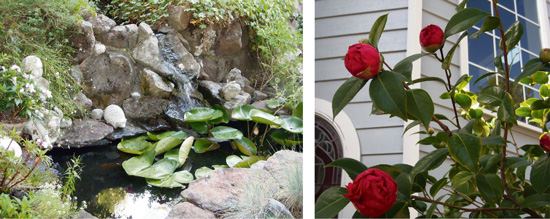 | Every February I long to see flowers blooming in my garden. Alas-that is not to be as February in Northern California is always the bleakest month as nature sleeps soundly. Gazing out at the gloomy landscape, I am always thrilled by the surprise smattering of bulbs that have begun to push their weary heads above ground at a time when I crave bits of beauty. Perhaps that is why for the last twenty years of his life, Monet painted only one subject-his gardens in Giverny where bulbs played the leading role. It is fitting to write about Monet in these financially challenging times because it appears that his taste in bulbs and corms was shaped by his own money difficulties. Everyone knows of his beautiful water lilies floating tranquilly on the Giverny pond. Monet also loved painting irises in every shade of blue and purple, richly colored dahlias, and gladioli in pinks, reds, and bi-colors. The early trumpet daffodil and the purple saffron crocus are now appearing in my garden, and like Monet, my spirits are lifted.
Loving to cook with saffron, years ago I thought I’d be smart and save myself money by planting hundreds of saffron crocus bulbs. I planned on harvesting the dried stigmas to use in cooking, especially my favorite family recipe of Risotto alla Milanese which is heavily flavored with saffron. Little did I know that it takes 75,000 blossoms or 225,000 hand-picked stigmas to make a single pound which explains why saffron is the world’s most expensive spice. I did indeed hand pick the delicate blossoms and three thread-like stigmas from each bulb which, when dried yielded only a teaspoon. So much for becoming a saffron bulb farmer!
Since we have more time to dream about gardening in February than actually going outside and doing the work, this is a perfect month to start thinking about setting up a compost bin. Lately I’ve been receiving more emails from readers asking me how they can be more earth friendly by not putting so much waste in the garbage. Although most residents use their green cans, why not learn to compost and re-use your organic materials to enrich your own soils? I have always had big compost piles and everything from my kitchen and garden is recycled, reused, and repurposed into fertilizer for the yard. We used to call my son’s goat the “environmentally correct weed eating and fertilizing machine” as she’d eat all the plants, weeds, trimmings, and cuttings we discarded and her manure went right back into the garden in a perfect circle of life.
Based on the letters I received, I realized that not everyone wants a compost pile, but how about a compost bin? I recently acquired a Biostack from the Central Contra Costa Solid Waste Authority. It is a sleek stacking composter with an expandable system allowing more tiers to be added as necessary. No tools were required for the assembly and its solid black color made it literally disappear in a corner. Since the best time to start composting is in the spring when the temperatures are a bit warmer to allow the bacteria, fungi, and microorganisms an opportunity to break down organic matter, I wanted to give myself a head start on learning as much as possible about using my new garden helper. An information booklet comes with the Biostack with recipes on how to accelerate the decomposition process. In addition, composting workshops are held for free throughout the county to assist residents to start growing a healthy garden. You can order a Biostack or find out about free classes by calling the Home Composting Hotline:(925) 906-1801.
My motto in life has always been “failure is fertilizer” because I don’t believe in mistakes. Learning from life digging in the dirt, I figure that when something doesn’t thrive, I throw it on the compost pile, then use the new earth to plant a fresh garden. Lessons from nature adapted to daily living, I guess you’d call that.
What goes in a composter, you are probably wondering? Just about everything organic is my response. I rarely use the garbage disposal in my kitchen because my system is two-fold. I have a five-gallon bucket outside my door for all the non-meat food scraps, vegetables, bread, and fruit to be fed to my barnyard animals. In addition, they eat my rose cuttings, weeds, and tree trimmings and all non-poisonous edible plants that I’ve discarded. Weekly I clean their manure mixed with hay and put it in the compost pile. Added to that goes all the leaves, lawn clippings, bark, coffee grinds, tea leaves, shredded newspaper, and any other organic material. I don’t put dog or cat feces, meat scraps, bacon grease, plastics, or diseased plants into the pile. The pile gets turned with a pitch fork whenever I pass by. I know it’s ready to be spread on my garden when the color is a rich dark brown, it crumbles in my hand, and the smell is musty and earthy. Yummm-I love that smell and I’m always citing the “barnyard” aroma when I savor a delicious wine. That’s all there is to it from my farm girl background. As a disclaimer, I have not yet taken the county composting course, but I surely intend to do so. And now that I have the Biostack, in late spring I’ll report my findings to you.
I’m not sure if Monet composted or not, but although his pocketbook was empty, he was rich with the flowers of France. May you enjoy the beginning blossoms of the bulbs of February while you ponder your springtime composting options.
And, oh yes, Happy Valentine’s Day. Don’t forget to give roses or favorite flowers to the one you love.
“Failure is fertilizer. Put your mistakes on the compost pile and grow a new garden!”
Cynthia Brian
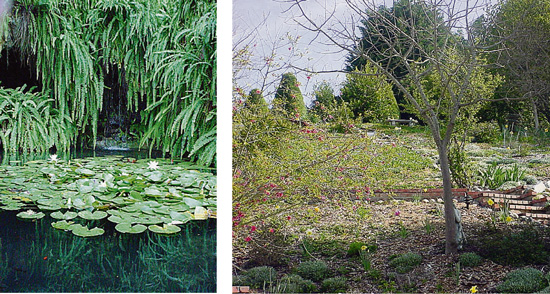
|
Cynthia’s Digging Deep Gardening Guide for February
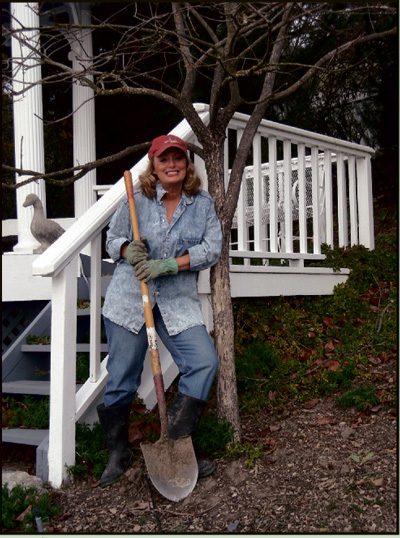
February is usually the wettest month. Last February I lectured throughout South America where the seasons are the reverse of ours. I witnessed lupines in the warm climate of Chile in all shades of the rainbow that towered over six feet. In the Falkand Islands, the chilly earth was covered in a beautiful three-inch think berry ground cover that blanketed the cliffs where the penguins played. In just a few days, I’m off to cruise throughout the Caribbean on another lecture tour where I’ll be branching out my garden repertoire. Before I leave, I want to make sure to give you just a few tips, although you can be a bit lazy in the garden in February. The cold weather actually helps the harvests of the fall. If you were smart and planted your bulbs, tubers, rhizomes, and corms last fall, this month you will enjoy the blush of beauty as the new growth emerges from the damp soil, stretching their painted heads towards the sunlight. Crocus, daffodils, anemones, Dutch iris, amaryllis and even the blossoms of plum trees brighten our yards with their vibrant colors towards the end of the month.
• FROST can kill your tender plants so watch out for clear, still nights and protect your
plants with sheets, tarps, cardboard boxes or plastic. Don't touch the leaves.
• SHARPEN dull blades of your pruning shears by using a small metal file and pulling across
the blade at the same angle as the cutting edge. Re-sharpen after every two or three hours of use.
• PRUNE your fuchsias and give the cuttings to a friend or plant elsewhere in your yard for
color later in the season. Also prune your evergreen shrubs such as pittosporum, euonymus,
buddleia, and rosemary.
• ROSES should already have been cut back, but if you are tardy, make sure to prune
the first week of February.
• BULBS for summer planting may be purchased now before there are none left in the stores.
Don't plant them, though, until next month.
• LAST CHANCE to plant bare root trees and roses.
• REPOT houseplants this month and they'll have a great spring growth.
• SPRAY deciduous plants, trees, and roses with the final dose of dormant spray to ward
away disease and insects. Only spray if they have not begun to bud or they could be damaged.
• LEARN more about composting. Take a free class or gather information from the internet.
• FLOAT a few camellias in a glass bowl for instant indoor joy. Camellias are in full February
flourish. Don’t cut back azaleas and camellias until blooms have faded in spring
• PICK Meyer lemons and Navel oranges this month. The lemons are delicious in teas, pies,
salads, meat dishes and just about everything. The oranges are the perfect snack or lunch box fruit.
• BIRDS are still hungry and need their protection. Don’t forget to keep feeding our
fine feathered friends.
• BUY orchids to brighten the winter blues for your interior spaces. A variety of species
boasting a rainbow of colors and textures are now available in your local stores. Orchids are
long lasting, easy to care for, and add an elegance that few plants can equal. And if you
baby them as I do, they’ll bloom for you again next year!
• READ about Monet and his glorious gardens while you have the down time.
Happy Gardening to you from Cynthia
Cynthia Brian
©2009 www.GoddessGardener.com
On April 16, 2009 Cynthia will be the luncheon speaker at the Moraga Garden Club.
Cynthia’s new book, Be the Star You Are! for TEENS debuts on 9/9/09. Pre-sale orders can be made by contacting Cynthia@goddessgardener.com
| 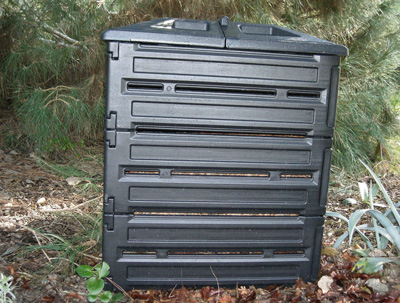
| 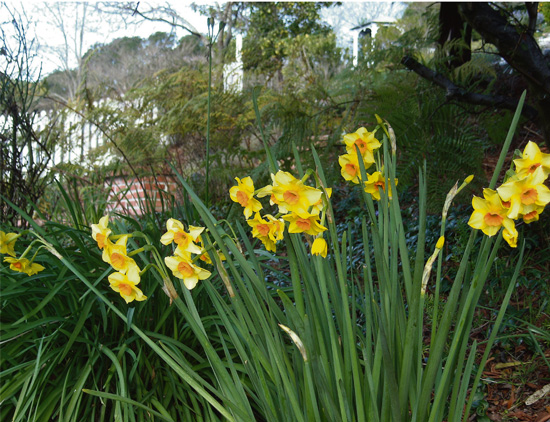
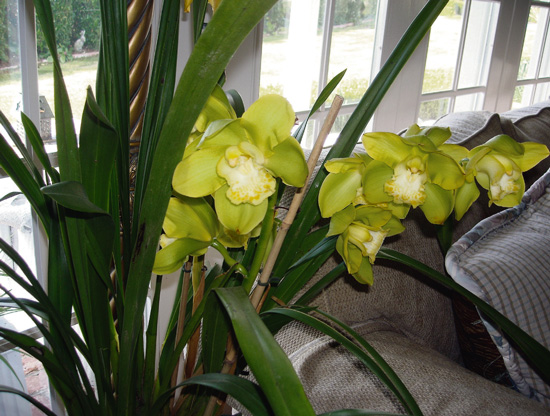 | | | | | | Advertisement | | |
| | | | | | Comments | | | | | | | | | | | | | | | Subscribe / Unsubscribe | | | | | |
| | | | | |  | | |
| | |  | | |
| | | | | |









